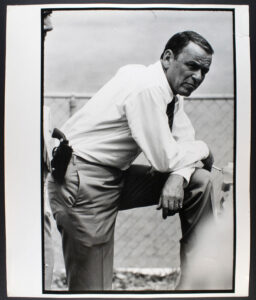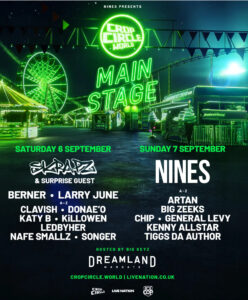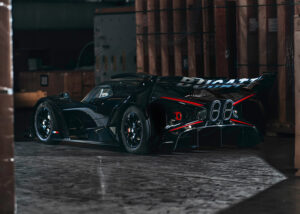
Zak Ové’s “Invisible Men” stands as a powerful, multifaceted art installation that transcends mere visual spectacle to interrogate deep-seated historical and cultural narratives. Presented at the Bomb Factory, the piece consists of over 40 life-sized sculptures, which serve as a testament to Ové’s mastery of the interplay between form, symbolism, and context. Through these meticulously crafted figures, Ové brings forth a compelling critique on representation, visibility, and the African diaspora’s enduring struggle for recognition in a world that often seeks to erase their presence.
The Blend of Tradition and Innovation
At first glance, the material composition of “Invisible Men” arrests the viewer with its uncanny blending of traditional African craft and modern sculptural techniques. Each sculpture, cast in graphite, copper, or iron, reflects a duality that runs through much of Ové’s work: the merging of past and present, the organic and the industrial. The rough textures of the sculptures’ surfaces evoke the tactility of handmade artifacts, while the use of contemporary metals alludes to the pervasive influence of industrialization and capitalism in modern society. This confluence of materials challenges conventional expectations of African art, which is often stereotypically associated with wood, textiles, and ceramics.
The figures’ form, posture, and facial expressions further emphasize the weight of history carried by each sculpture. Their stiff, upright stance and forward-facing gaze invoke a sense of resilience and defiance, as if they are standing in direct opposition to their historical erasure. The standardized postures, reminiscent of traditional African statues, juxtapose the individual facial expressions that vary slightly among the sculptures, suggesting a collective yet fragmented identity. By replicating these slight variations, Ové implies that even within a homogenized portrayal of African heritage, there exists an undercurrent of personal experience and narrative.
Echoes of the Colonial Past
Ové’s “Invisible Men” does not merely invite the viewer to observe the statues as static art objects; instead, it challenges them to confront the silenced stories of the African diaspora. The installation’s title itself is a direct reference to Ralph Ellison’s seminal novel “Invisible Man” (1952), which explores themes of racial invisibility and alienation in American society. Through his choice of title, Ové situates his work within the larger discourse of Black identity and cultural representation, while simultaneously broadening the conversation to include African and Caribbean experiences in the UK.
The stark, orderly arrangement of the statues within the space evokes the haunting imagery of human beings commodified and dehumanized, lined up as mere objects in a display case. This deliberate configuration recalls the traumatic histories of the transatlantic slave trade, when African bodies were stripped of agency and identity and subjected to brutal categorization and auction. The rigidity and uniformity of the figures suggest a loss of individuality, yet their faces—each uniquely expressive—hint at an inner struggle for recognition and visibility. In this sense, “Invisible Men” becomes a visual metaphor for the erasure and reclamation of identity.
A Conversation Between Past and Present
The Bomb Factory’s expansive, industrial setting plays an essential role in how the viewer experiences “Invisible Men”. As one moves through the installation, the viewer is confronted by the towering figures that simultaneously command presence and remain eerily detached. This spatial arrangement forces an almost confrontational relationship between the viewer and the statues. The sculptures, with their imposing heights, force the observer to look up, further emphasizing their power and resilience despite being rendered “invisible” in the narratives of Western history.
Yet, the installation’s spatial dynamics also evoke a sense of surveillance and observation, as if the sculptures are silently watching the viewer. This reversal of gaze disrupts the traditional power dynamic between art object and spectator, challenging the viewer to consider their own role in the ongoing processes of cultural appropriation and historical amnesia. The viewer becomes acutely aware of their presence in the space, oscillating between feeling scrutinized and implicated.
The installation’s spatial design further allows for moments of introspection and isolation, as the viewer navigates through the figures. Some sculptures are positioned close enough to form intimate clusters, while others are spread further apart, creating a sense of disconnection and alienation. This tension between proximity and distance reflects the diasporic experience of both connection to cultural roots and estrangement from them due to displacement and migration.
A Dialogue with Tradition and Modernity
Ové’s sculptures are imbued with rich symbolism that transcends their visual form. The figures’ hollow eyes and blank expressions evoke a sense of spiritual absence, as if they are shells of beings that once possessed life and vitality. This imagery speaks to the theme of cultural erasure and the suppression of African spirituality and knowledge systems under colonial rule. However, the use of luminous, reflective surfaces—particularly in the copper and graphite sculptures—suggests a re-emergence of these suppressed identities, a reclaiming of what was lost. The figures seem to shimmer under the gallery lights, as if defying their historical invisibility by demanding to be seen.
The presence of geometric patterns etched onto some of the figures’ torsos draws on traditional African symbolism, suggesting that despite the forces of erasure, cultural memory remains inscribed in the body. These patterns also evoke the scars left by colonial violence, both physical and psychological, yet they are rendered in a way that suggests beauty and resilience. By inscribing these motifs onto the figures, Ové bridges the gap between tradition and modernity, infusing his sculptures with a sense of continuity and transformation.
Furthermore, the sculptures’ lack of limbs—some appear as mere torsos or busts—serves as a poignant reminder of the dismemberment and fragmentation experienced by African societies under colonial rule. This motif of fragmentation is echoed in the installation’s title, “Invisible Men”, suggesting that the Black body has been rendered incomplete and invisible in the Western cultural imagination. Yet, Ové’s deliberate focus on the head and torso emphasizes the endurance of spirit and intellect, despite physical constraints.
Socio-Political Commentary: Resistance and Reclamation
The socio-political implications of “Invisible Men” resonate strongly within the context of post-Brexit Britain, where issues of race, immigration, and national identity have become increasingly fraught. By installing his sculptures in a space like the Bomb Factory—a former industrial site repurposed for artistic creation—Ové underscores the role of art in challenging and redefining public narratives. The Bomb Factory’s location in London, a city marked by its colonial history and multicultural present, further intensifies the installation’s impact. “Invisible Men” emerges as a visual protest against the erasure of Black history and a call for the reclamation of space and visibility.
The installation’s title also carries a double entendre, pointing to both the invisibility of Black bodies within mainstream historical narratives and the labor of Black workers who have been integral to the UK’s development, yet remain unacknowledged. Ové’s use of industrial materials like iron and copper thus takes on added significance, serving as a metaphor for the exploitation and commodification of Black labor.
By positioning “Invisible Men” within this socio-political context, Ové encourages viewers to reflect on the historical conditions that have shaped contemporary racial dynamics. The installation becomes a site of resistance, where the sculptures’ stoic presence asserts a refusal to be forgotten or marginalized.
Zak Ové’s ”Invisible Men” is a powerful installation that operates on multiple levels: as a work of art, a cultural critique, and a socio-political statement. Through his masterful manipulation of form, material, and space, Ové creates a visual narrative that addresses the historical erasure of Black bodies and the ongoing struggle for visibility and representation. Each sculpture, though seemingly identical at first glance, reveals a depth of individuality and resilience that speaks to the complex identities of the African diaspora.
In the end, “Invisible Men” stands as a testament to the enduring power of art to make visible what has long been hidden and to challenge dominant narratives through a reclamation of space, identity, and history. Ové’s installation is not merely an aesthetic experience but a call to action, urging viewers to confront the legacies of the past and to imagine new possibilities for the future of representation and cultural visibility. As such, “Invisible Men” is not just a critique of invisibility but a celebration of presence, resilience, and the unbreakable spirit of those who refuse to be unseen.
No comments yet.








